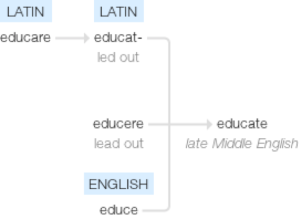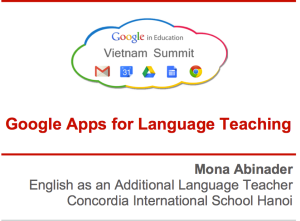A few weeks ago, I was asked to substitute for a 12th-grade modern history teacher. I was told that the students were on Unit 4, which covered the causes that led to World War II. With no previous experience in teaching Grade 12 history nor the time to explore and learn all about WWII and its causes, I decided to ask ChatGPT to outline the main causes for me. Minutes later, I was given the list of causes. With that in hand, I prepared lessons and several activities to use with the students that delved deeper into the topic and incorporated the critical and analytical thinking that Grade 12 students ought to be doing. Although I had up until that time thought there was some great potential usage for Chat GPT in teaching and learning, the experience left me not only more confident about taking on less familiar teaching topics but also led to a desire to explore in depth this tool and its potential for teaching and learning.
What is ChatGPT exactly?
ChatGPT is an artificial intelligence chatbot, a conversation-capable technology that uses data from the internet to assimilate human-like conversation, process requests, and formulate answers to inquiries. The GPT stands for “Generative Pre-trained Transformer,” which refers to how ChatGPT is trained to learn from all the languages it encounters from a wide range of texts available on the internet.
In November of 2022, ChatGPT made its debut. I was teaching online at that time and began hearing from my overseas students about ChatGPT and its popularity with learners. The mixture of reactions to its presence was such that while students marvelled at the ease with which they can now get their questions answered, many instructors were crying out for its ban from education institutions altogether. There were also those who feared it, as the human mind tends to fear all that is new and different, and who didn’t know what this was all about. There were even those who wondered whether we were now all going to be replaced by these virtual encyclopedias. Still, there were some who were curious and wondered how exactly this changes the way we teach and learn and how and where it will affect us the most. Being in the latter category, I began reflecting on how best to integrate this tool into my online teaching sessions and started the conversation with my student-teachers, who joined my online class from all over the globe. The more I spoke to students and played around with ChatGPT, the more I understood its abilities and limitations.
What can ChatGPT do exactly?
Without a doubt, ChatGPT can gather a vast amount of information and eloquently spit it back at us, but lest we forget that the validity and value of that information are as good as the information we make available or train it to absorb, as well as the wording of the inquiry we ask of it. Nothing more, nothing less. Contrary to our innate ability to reason and think creatively and intuitively about the world around us and to use our personal experiences and cultural history to better understand and analyze data, with ChatGPT and artificial intelligence in general, these abilities do not come into play, and without these abilities, information can potentially be void of meaning and value.
Notwithstanding the fact that ChatGPT only has access to information up to 2021, it is important to once again state that ChatGPT does not have the ability to either filter or identify biased content and does not comprehend the true meaning behind words or text. Yes, ChatGPT can understand and generate language in a conversational manner, can help individuals and organizations streamline processes, can save time in mining large databases, and probably can write this blog in a more efficient manner than I can, but can it and will it be able to replace the value of a human teacher?
ChatGPT and Teaching
Playing around with ChatGPT, I could identify a few ways that this tool can add to teaching and learning:
ChatGPT can help automate administrative tasks for educators, such as grading, providing feedback, and answering basic questions. This frees up time for teachers to focus on other tasks, such as student engagement and relationship building.
As an assistive technology, ChatGPT can generate content tailored to a learner’s specific needs and interests. It can also provide an alternative way of interacting with course material for learners with disabilities and other challenges. However, while ChatGPT is capable of providing generic responses based on the inquiry and input it receives, it cannot give students personalized feedback or assessments that take into account the learner’s strengths and weaknesses, cultural background, personal struggles, and history.
For language learning, ChatGPT could also be used as a tool to help students learn a new language with language translation, writing assistance, and even speaking and listening practice. However, it is a known fact that non-verbal communication, such as facial expressions, body language, and tone of voice, is key to conveying meaning and emotion in an exchange. This cannot be replicated by ChatGPT, which relies solely on text-based interactions.
Last, but not least, the relationships that we build as teachers with our students allow us to understand their unique needs, interests, and motivations. These relationships create a positive and supportive learning environment, which is key to enhancing students’ engagement and achievement. ChatGPT, as an artificial intelligence language model, does not have the capacity to build relationships with humans. Nor can it explain and engage students in complex concepts, provide hands-on activities, or give guidance on moral and ethical issues to help them understand the values and principles that, for example, can lead to world wars. Yes, ChatGPT can provide information on such topics, but it cannot provide the nuanced guidance and support that a teacher can. Although rich in artificial intelligence, it lacks emotional intelligence, which is at the core of all human interaction and relationships. ChatGPT does not know empathy and compassion. It will not care whether a learner fails or succeeds.
Ensuring that the data that ChatGPT references is diverse, representative, accurate, and ethical will ensure the responsible use of ChatGPT. Being aware of its limitations and the potential danger of its misuse are key factors as this tool makes its way into teaching and learning. By fine-tuning that balance of great technology and good teaching skills, we really can make the most out of ChatGPT because our strength and intelligence as human beings lie not only in creating these great tools but in our ability to use them to improve our lives and the lives of those around us.



 A poem by
A poem by  It was a lesson on measurements. I asked the students to measure things and places in and around their homes. The next day, two of the girls listed 1 kilometer and 1.5 kilometers as the size of their backyards. I confidently corrected their answers explaining that backyards would never measure a kilometer in length – it was far too big! – only to discover later that year that the girls’ backyards were in fact a few kilometers in length as were the backyards of many of the Emirati People!
It was a lesson on measurements. I asked the students to measure things and places in and around their homes. The next day, two of the girls listed 1 kilometer and 1.5 kilometers as the size of their backyards. I confidently corrected their answers explaining that backyards would never measure a kilometer in length – it was far too big! – only to discover later that year that the girls’ backyards were in fact a few kilometers in length as were the backyards of many of the Emirati People!





